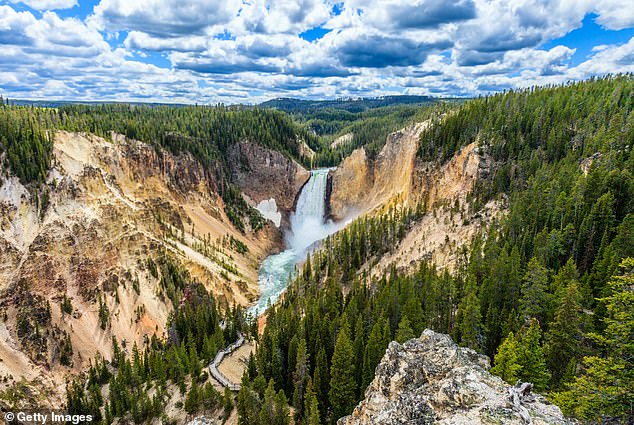The most dangerous threat to visitors to Yellowstone Park has been revealed, and it’s not bears or bison.
Since the National Park was created in 1872, two people have been killed by bison and eight by bears, according to the USGS.
But the hot springs have proven to be much deadlier, with a total of 22 people killed since 1890.
In fact, according to the National Park Services, the hot springs have caused more deaths and injuries than any other natural feature in the park, including wildlife.
This month, a New Hampshire woman suffered second- and third-degree burns after going off the trail and falling through the thin geothermal crust near Old Faithful Geyser.
The 60-year-old man was hospitalized after coming into contact with “scalding hot water” below the surface, park officials said.
Yellowstone hot springs have proven to be much more dangerous to humans than animals, with a total of 22 people dead.
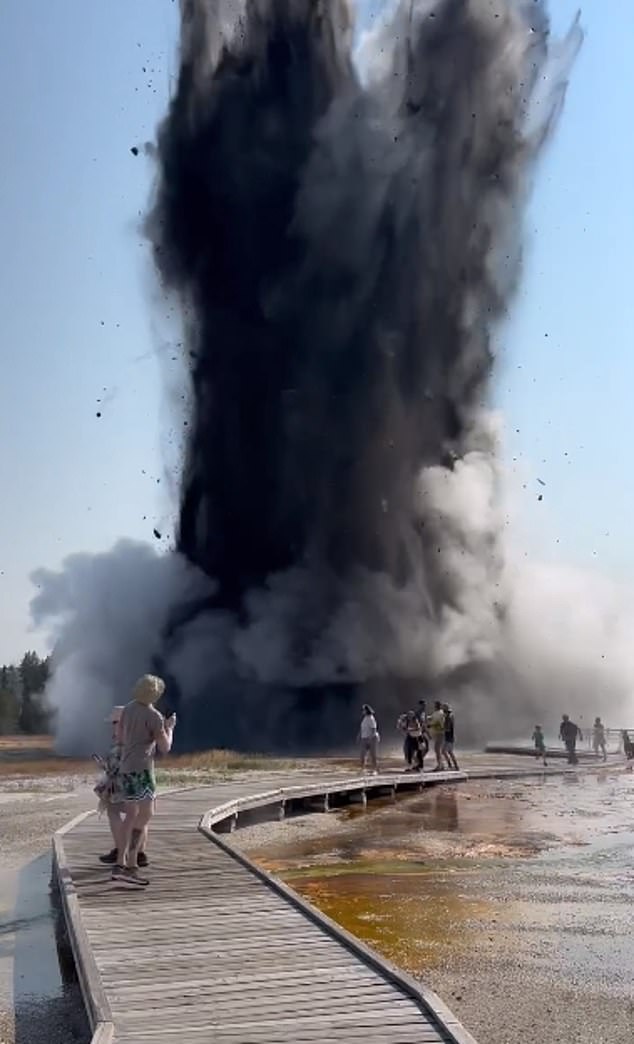
According to the National Park Services, the hot springs have caused more deaths and injuries than any other natural feature in the park, including wildlife.
The unidentified woman is said to have ignored signs warning of the prohibited thermal area near the Mallard Lake Trailhead while hiking with her husband and dog.
The incident is the first known thermal injury at the park this year.
There are more than 10,000 hydrothermal features in Yellowstone National Park, including hot springs, geysers, and mud pots.
Many hot springs in the park exceed 150°F (66°C) and some exceed 185°F (85°C).
Even brief exposure to these high temperatures can cause severe burns. When a large part of the body is scalded, survival rates are low.
The first recorded case of burns in the park was in 1870.
Explorer Truman Everts, separated from his companions, survived 37 days in the wilderness before being rescued.
To keep warm, he slept near a hot spring and a burst of steam burned him.
According USGSEverts’ injury is typical of a hot springs incident in that the damage was due to temperature.
While some hot springs are slightly acidic, they are typically not concentrated enough to dissolve body parts.
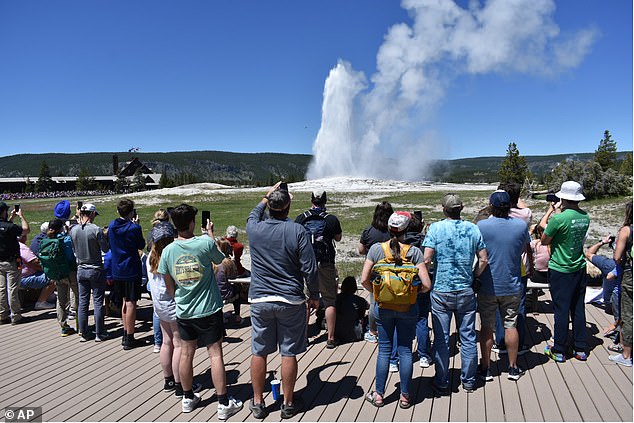
Tourist suffered second and third degree burns after walking off Yellowstone Park trail
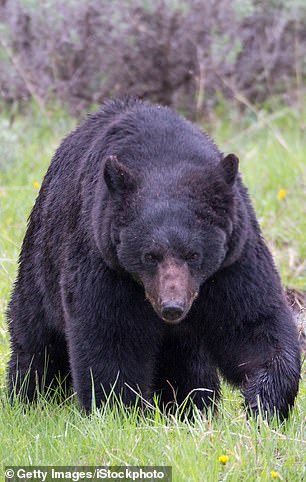
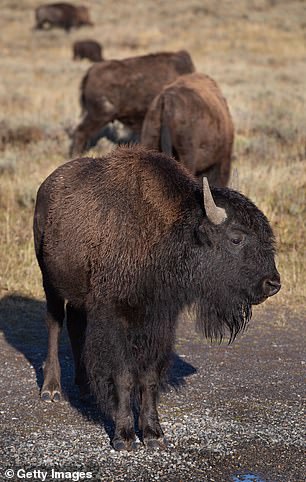
Since the National Park was established in 1872, two people have been killed by bison and eight by bears, the USGS reported.
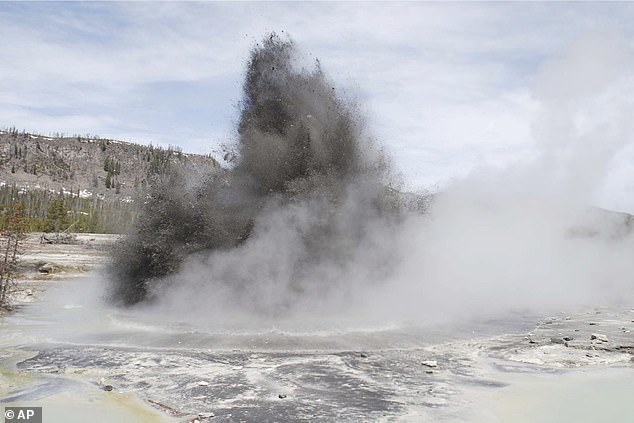
Pictured: A hydrothermal event is seen in Biscuit Basin in Yellowstone National Park in 2009. Yellowstone officials say a similar explosion on Tuesday, July 23, 2024 sent tourists running for cover and destroyed a boardwalk.
This time last year, a Michigan man was criminally charged with off-trail travel after suffering burns in Yellowstone thermal pools.
In August 2022, Il Hun Ro, 70, of Los Angeles, was killed and almost completely disbanded after falling into one.
Only his foot was found and DNA testing was necessary to identify his remains.
In 2021, Two people were injured in the hot springs, one of them a 20-year-old woman who suffered severe burns after entering Maiden’s Grave Spring to save her dog, who died from her injuries.
That same year, the Yellowstone-based federal justice system sentenced a Connecticut man to a week in jail and made him pay a $1,000 fine to the preservation group overseeing the park for trespassing on a thermal feature.
In 2000, 20-year-old Sara Hulphers fell into the boiling waters of Cavern Spring while hiking in the Lower Geyser Basin and died from third-degree burns.
That same year, the court banned a Pennsylvania woman from the park for two years, plus two years of probation and nearly $500 in fines, after she invaded the small thermal grounds that year.
Yellowstone National Park has experienced a tourism boom in recent years following the success of the hit television series starring Kevin Costner.
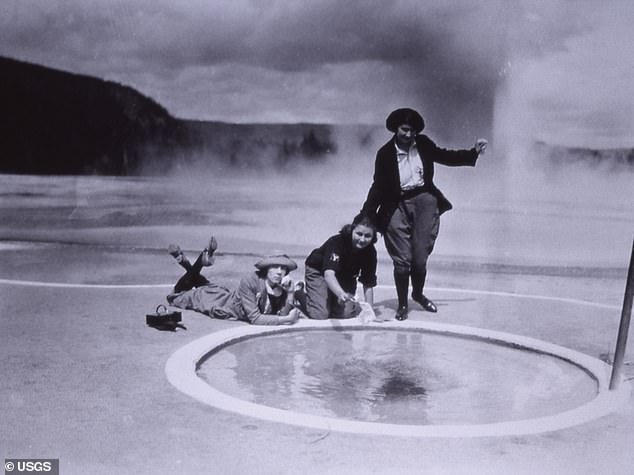
Pictured: First visitors to Handkerchief Pool, Black Sand Basin, circa 1923
The cowboy drama attracted an estimated 2.1 million visitors and $730 million in tourists, according to a report last year. It also contributed to a boom in the state that caused housing prices to skyrocket.
But with an increase in tourism comes an increase in accidents.
Webcams around the park have captured multiple cases where ignorant tourists have put themselves in harm’s way for various reasons, ranging from wanting to get closer to wildlife or climbing over barriers to take a better selfie.
An Instagram account titled ‘Yellowstone Tourones‘ collects all the cases in which a ‘touron’, the combination of a ‘tourist’ and a ‘mouron’, carries out another incredibly stupid charade, desecrating the park rules over and over again.
If anything, the account serves as an example of “what not to do,” as the park’s rules and regulations are linked in the bios of its nearly 550,000 followers.
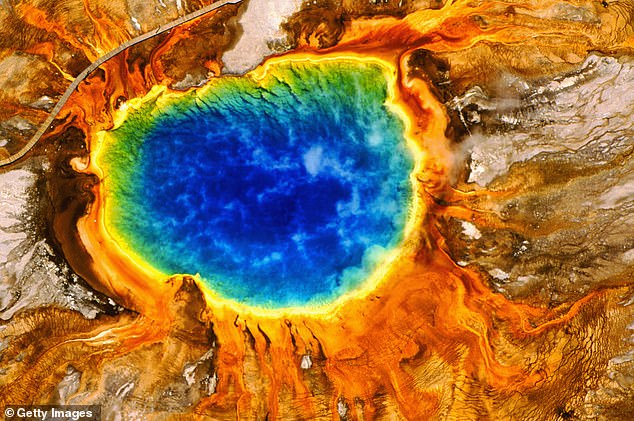
Yellowstone is home to about half of the world’s geysers, many of which experts say are so astringent that soaking in one would be akin to swimming in battery acid.
The account is open to submissions as a way to encourage visitors to hold each other accountable.
The largest influx of tourists visits Yellowstone during the height of spring or fall, but tours began to taper off earlier this year.
“We’re already seeing new levels of stupidity this year,” said Jen Mignard, owner of the Yellowstone National Park: Invasion of the Idiots Facebook page. Cowboy State Diary in April. “I suspect that with even more tourism, we’ll see a lot more really negative actions coming from the park.”
Several videos show the ‘tourons’ wandering along the promenade enabled so that tourists can observe the hot springs from a safe distance, to get dangerously close to the geysers.


